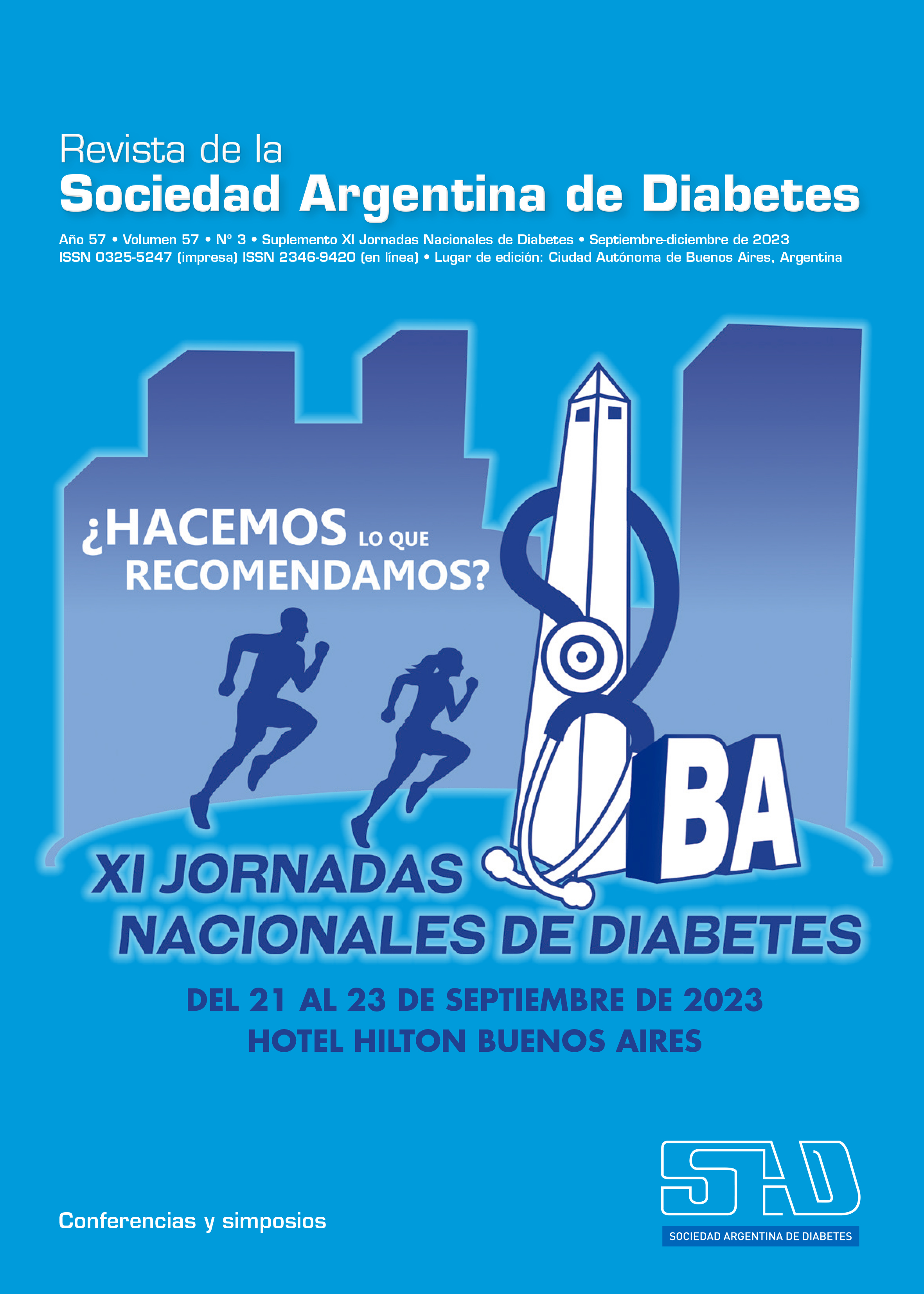Nonalcoholic fatty liver disease/fatty pancreas in prediabetes
DOI:
https://doi.org/10.47196/diab.v57i3Sup.664Keywords:
nonalcoholic fatty liver disease, fatty pancreas, prediabetesAbstract
Non-alcoholic fatty liver disease (NAFLD), recently renamed metabolic dysfunction-associated steatotic liver disease (MASLD), has a global prevalence of approximately 25%-30%. Nonalcoholic fatty pancreas disease (NAFPD) is the term used to define the accumulation of fat in pancreatic tissue associated with factors such as obesity, metabolic diseases (MetS), age, and MASLD, but is unrelated to alcohol consumption. Fatty accumulation in MASLD is intrahepatocytic while in NAFPD is preferentially located in adipocytes within the pancreatic interstitial septa. Currently, large-scale epidemiological data on NAFPD prevalence is limited. A meta-analysis of over 12,000 individuals, in 11 studies (9 in Asians), estimated a prevalence rate of 33% (95% CI 24%–41%). The cut-off value to define excess hepatic fat in MASLD is >5%, and in NAFPD, it has been proposed as >6.2%, but there is still no consensus on this matter.
While histology remains the gold standard for assessing pancreatic fat, its feasibility in clinical practice is limited due to significant risks and ethical considerations. Consequently, alternative abdominal imaging techniques, such as ultrasound (US), endoscopic ultrasound (EUS), non-contrast computed tomography (CT), and non-contrast magnetic resonance imaging (MRI), are employed. Despite high costs and limited accessibility, MRI is regarded as the noninvasive gold standard for quantifying pancreatic fat content.
Numerous studies using histology and imaging techniques like MRI, US, CT, and EUS in healthy subjects have shown significant associations between MASLD and NAFPD, and in turn, both with obesity and MetS. NAFPD is identified in up to 70% of patients with MASLD, with risk factors including obesity, insulin resistance, MetS, hyperglycemia, hypertriglyceridemia, hypertension, MASLD, ethnicity (Caucasian and Hispanic), gender, and age (>50 years).
Although a majority of studies correlate NAFPD with prediabetes/Type 2 diabetes mellitus (DM2), some fail to confirm this link. Fat accumulation might contribute to beta-cell dysfunction via lipotoxicity, potentially augmented by local paracrine pathways, leading to reduced insulin secretion and hyperglycemia. The molecular basis remains elusive. Current research suggests involvement of uncharacterized metabolites, with or without direct paracrine effects of fat, in the pathogenesis of NAFPD.
Patients with prediabetes/DM2 should be screened for NAFPD and MASLD due to the frequent co-occurrence of these conditions, along with other components of MetS and cardiovascular disease. If MASLD is detected, disease stage and progression risk assessment is crucial. Similarly, incidental detection of NAFPD should prompt comprehensive evaluation for MASLD, MetS, prediabetes/DM2, and cardiovascular disease.
References
-
Downloads
Published
Issue
Section
License
Copyright (c) 2023 on behalf of the authors. Reproduction rights: Argentine Diabetes Society

This work is licensed under a Creative Commons Attribution-NonCommercial-NoDerivatives 4.0 International License.
Dirección Nacional de Derecho de Autor, Exp. N° 5.333.129. Instituto Nacional de la Propiedad Industrial, Marca «Revista de la Sociedad Argentina de Diabetes - Asociación Civil» N° de concesión 2.605.405 y N° de disposición 1.404/13.
La Revista de la SAD está licenciada bajo Licencia Creative Commons Atribución – No Comercial – Sin Obra Derivada 4.0 Internacional.
Por otra parte, la Revista SAD permite que los autores mantengan los derechos de autor sin restricciones.



















